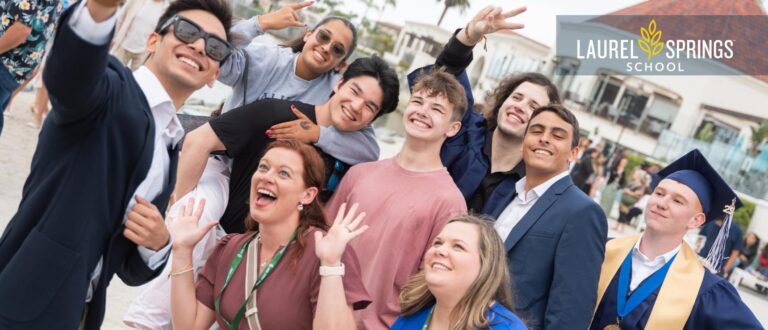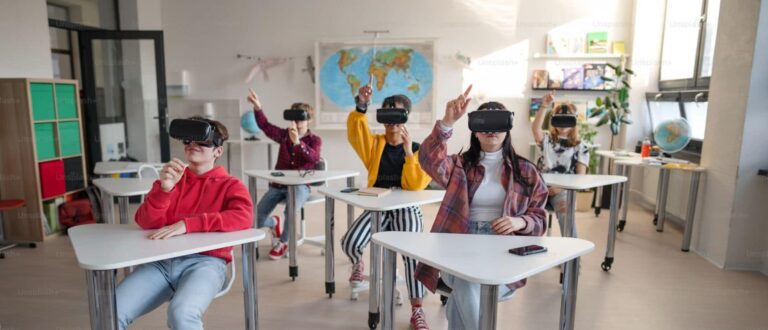What school subjects did you use in your job today? Go ahead, really think! Maybe you used your English skills to send emails or develop a presentation. Perhaps the content involved math, psychology, or science. It’s rare to separate problems you solve on a daily basis into singular subject areas.
The real world is not a tidy collection of compartmentalized subjects. Solving real-world problems requires a blend of knowledge and skills from various disciplines. Consider climate change for instance. Effective climate change solutions will require collaboration between the disciplines of politics, economics, engineering, biology, chemistry, physics, ethics, and technology.
This is why interdisciplinary learning is exciting. By integrating different subjects into a single learning experience, we can better prepare students to solve the world’s biggest problems, which don’t fall neatly into school subjects. Interdisciplinary education helps kids develop a holistic understanding of the world, while also nurturing their critical thinking, creativity, and adaptability—key ingredients for success in today’s complex and ever-changing landscape.
Let’s take a look at why the future of school is multidisciplinary, including proven benefits of interdisciplinary studies for learners.
What is Interdisciplinary learning?
Interdisciplinary learning is an educational approach integrating knowledge and skills from different disciplines to create a more holistic, connected learning experience.
In an interdisciplinary learning environment, instead of having Science class, then History class, then Math class, each comprised of activities unrelated to each other, learning is organized into interdisciplinary units, combining learning from multiple disciplines into one.
Let’s use as an example “Cities of the future”, where learners explore the real-world challenge of sustainable urban development. Tackling this issue involves fields such as urban planning, architecture, ecology, economics, and technology. By designing everything from model cities, eco-friendly buildings, and public art, kids learn concepts traditionally taught in science, social studies, and English, but applied to the real-world problems of city planning.
Rise of Interdisciplinary Education
Interdisciplinary learning has been championed by various organizations in education. Project Zero at Harvard Graduate School of Education focuses on interdisciplinary research in the arts and humanities, while High Tech High, a network of California-based charter schools, emphasizes a project-based pedagogy of interdisciplinary teaching.
The London Interdisciplinary School, called “the most radical new university to open in decades,” has done away with traditional college majors in favor of interdisciplinary ones around real-world problems, like climate change, social media’s impact on health, or food waste.
The MIT Media Lab, a lab on the frontier of cutting-edge research on AI, city planning, and education, goes even further, embracing what they call anti-disciplinary learning. “As we engage in tackling harder and harder problems that require many fields and perspectives, the separation of disciplines appears to be causing more and more damage,” says Joi Ito, former director of the Media Lab.
Benefits of Interdisciplinary Education for Learners
- Real-world relevance: When kids see why what they’re learning matters, they’re much more motivated and engaged. When we compartmentalize subjects, we make it unclear how those subjects are used in the real world. For example, when the only writing assignments you are given in school are to write 5-paragraph essays your English teacher alone will read, you’re unlikely to grasp why writing is an essential skill in many careers. Imagine if, instead, you write a product pitch for an invention you developed to solve a real-world sustainability problem, like students did for the Biomimicry Youth Design Challenge.
- Deeper learning: Deeper learning theory posits learners need to go beyond surface-level memorization of knowledge and simple application of skills. This approach places emphasis on the ability to apply learning to complex, real-world problems and novel contexts. Solving the kinds of problems in interdisciplinary learning experiences demands more than understanding how to use skills in one subject area, requiring a synthesis of knowledge and skills from various disciplines. This requires rigorous, deep thinking!
- Personalized learning: When kids connect learning to their interests and strengths, they’re more motivated to learn and engage with topics outside their comfort zones. Since interdisciplinary learning combines multiple subject areas, it provides more opportunities for kids to find areas of the learning experience they’re interested in. Imagine an artistic learner who says “I hate science,” but discovers an appreciation for biology after an interdisciplinary unit about agar art. In this way, interdisciplinary teaching allows learners to apply their strengths in one subject area to another subject area, growing their confidence and sense of self.
Leena Williams, Lead Coach and Curriculum Designer from Prisma High School, explains the power of interdisciplinary teaching:
“21st century problems aren’t solved in neat subject-area boxes; they will be solved by doing the messy and creative work of bringing together disparate knowledge and experiences, combining them with strong values and ethical thinking, and having the courage to go out on a limb. Our curriculum puts learners in those positions and lets them experiment and think outside the box in low-stakes ways, now while they are young, so that they can build those foundations to draw upon as they reach higher education and the workforce. In short, we present things as complex and open-ended because they are—we don’t tidy them up for kids because we trust that kids can handle it.”
If you also believe in students’ ability to tackle tough, real-world challenges, advocate for interdisciplinary learning in your child’s school!






